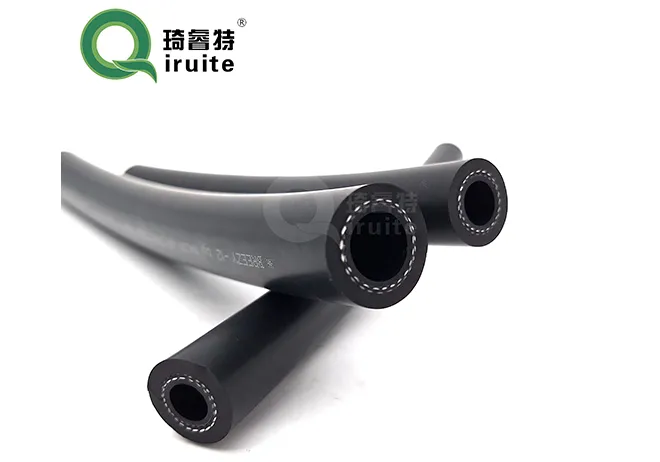Hydraulic Hose Connection Solutions for Optimal Fluid Transfer Efficiency and Reliability
Hydraulic Pipe Couplings Essential Components for Fluid Conveyance Systems
Hydraulic systems, ubiquitous in various industrial applications, rely on a range of components to ensure fluid efficiency and reliability. Among these components, hydraulic pipe couplings play a critical role. These fittings serve as connectors between hoses and pipes, facilitating the seamless transfer of hydraulic fluid under high-pressure conditions. Understanding the design, types, applications, and maintenance of hydraulic pipe couplings is essential for anyone involved in hydraulic system design or maintenance.
Understanding Hydraulic Pipe Couplings
Hydraulic pipe couplings are designed to connect hydraulic pipes or hoses while allowing for quick assembly and disassembly. They are generally made from durable materials such as steel or aluminum, which can withstand the aggressive characteristics of hydraulic fluids and the high pressures commonly found in hydraulic systems. Key characteristics of hydraulic couplings include their pressure ratings, compatibility with various fluids, and resistance to corrosion and wear.
Types of Hydraulic Pipe Couplings
Hydraulic couplings come in various types, each tailored for specific applications. The most common types include
1. Threaded Couplings These fittings use male and female threads to create a tight, leak-proof seal. They are often used in installations where permanent connections are necessary.
2. Quick-Connect Couplings Ideal for applications requiring frequent connections and disconnections, quick-connect couplings feature a simple push-to-connect or pull-to-disconnect mechanism. This makes them extremely convenient for mobile equipment and systems needing frequent maintenance.
3. Flange Couplings These couplings use bolted flanged connections that provide a robust and rigid connection ideal for high-pressure applications. Flange couplings are often used in large hydraulic systems and plant equipment.
4. Cam and Groove Couplings Typically employed in larger hoses, cam and groove couplings allow for rapid connections and disconnections using lever arms. They are convenient for applications in construction and manufacturing.
5. Push-to-Connect Couplings This type doesn’t require tools for assembly. They are designed for ease of use and are commonly employed in pneumatic systems but are also found in hydraulic applications.
Applications of Hydraulic Pipe Couplings
Hydraulic pipe couplings find applications across a variety of sectors
hydraulic pipe coupling

- Construction In heavy machinery like excavators and bulldozers, hydraulic couplings connect hoses that control hydraulic cylinders responsible for lifting and moving materials
.- Agriculture Agricultural equipment such as tractors utilize hydraulic couplings to operate attachments like plows and harvesters, enhancing farming efficiency.
- Manufacturing Many manufacturing processes rely on hydraulic systems for material handling and processing. Couplings ensure that hydraulic fluids are properly transferred among different components of the system.
- Automotive Hydraulic pipe couplings are used in car assembly lines where hydraulic systems power robotic arms and conveyor systems.
Maintenance of Hydraulic Pipe Couplings
Ensuring the longevity and efficiency of hydraulic couplings requires regular maintenance. Key maintenance practices include
1. Inspection Regularly inspect couplings for signs of wear, corrosion, or leakage. Early detection of potential failures can prevent costly downtime and safety hazards.
2. Cleaning Keep couplings clean and free from debris. Contaminants can lead to wear and failure of both the couplings and the hydraulic system.
3. Proper Installation Follow manufacturer guidelines for the installation of couplings to ensure a secure and leak-proof connection.
4. Lubrication Some couplings may require lubrication to function optimally. Refer to the manufacturer's specifications for details.
5. Replacement When couplings show signs of significant wear or damage, it’s crucial to replace them promptly to maintain system integrity.
Conclusion
Hydraulic pipe couplings are essential components of hydraulic systems, ensuring efficient fluid transfer under various operating conditions. Their diverse types cater to a wide range of applications, from construction to manufacturing. Regular maintenance and appropriate selection of couplings can lead to enhanced performance and reliability of hydraulic systems. As industries continue to evolve, the importance of understanding and effectively managing these critical components will only grow, contributing to the overall productivity and efficiency of hydraulic applications.
-
Ultimate Spiral Protection for Hoses & CablesNewsJun.26,2025
-
The Ultimate Quick-Connect Solutions for Every NeedNewsJun.26,2025
-
SAE J1401 Brake Hose: Reliable Choice for Safe BrakingNewsJun.26,2025
-
Reliable J2064 A/C Hoses for Real-World Cooling NeedsNewsJun.26,2025
-
Heavy-Duty Sewer Jetting Hoses Built to LastNewsJun.26,2025
-
Fix Power Steering Tube Leaks Fast – Durable & Affordable SolutionNewsJun.26,2025

